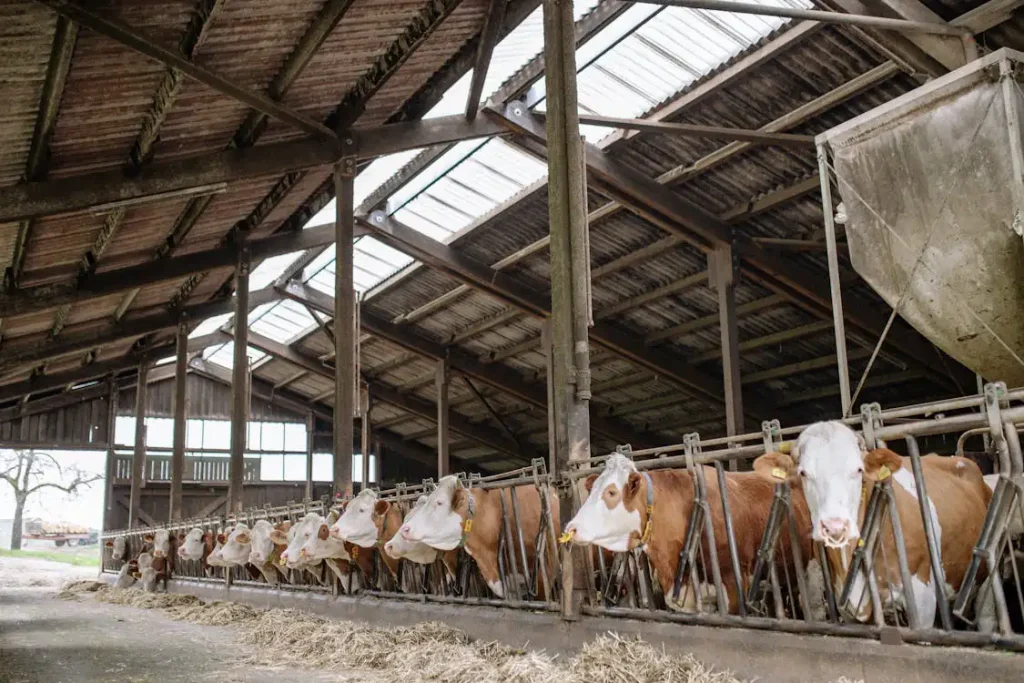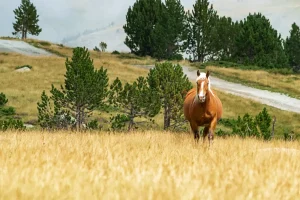
Are you looking for cattle ranches for sale in Colorado? Cattle ranching is an amazing business that provides a steady flow of income while getting close to nature and livestock raising. However, becoming a successful commercial property investor and owner means doing your homework before starting a cattle ranch. In this post, we’ll discuss the important elements to look for in a cattle ranch and provide tips and insights on how much cattle ranches in Colorado cost.
What are Cattle Ranches in Colorado Like
Cattle ranches in Colorado possess a unique charm, blending rugged terrain with picturesque landscapes. Spread across the state’s vast expanses, these ranches often sit against the backdrop of the Rocky Mountains, offering breathtaking views.
Investors and ranchers in Colorado utilize traditional methods alongside modern practices to manage their herds sustainably. With a focus on conservation and stewardship, many ranches participate in programs to preserve natural habitats and wildlife corridors. Colorado cattle ranches represent a harmonious blend of tradition, innovation, and reverence for the land, contributing to the state’s rich agricultural heritage.
Where to Find Cattle Ranches for Sale in Colorado
When searching for cattle ranches for sale in these areas, consider reaching out to local real estate brokers who specialize in rural and agricultural properties. Additionally, online real estate platforms and auction websites may also list cattle ranches available for purchase in Colorado.
Denver Metro Area
Expand your search to the vast Denver metropolitan area, including counties such as Jefferson, Littleton, and Arapahoe. Many rural and agricultural properties, including cattle ranches, can be found within a reasonable distance from Littleton.
South Park Region (Including Park County)
Park County, located in the South Park region of Colorado, offers expansive landscapes and rural properties suitable for cattle ranching. Towns such as Fairplay and Hartsel serve as hubs for accessing ranch properties in this area.
Western Slope
Explore areas on the Western Slope of Colorado, such as Mesa County, Montrose County, and Delta County. While these regions are more commonly associated with orchards, vineyards, and other agricultural pursuits, cattle ranching is also prevalent, particularly in the more rural areas.
South Central Colorado
Counties like Chaffee and other nearby areas in South Central Colorado offer picturesque landscapes with mountains, valleys, and ample grazing land for cattle. The area’s rugged terrain and fertile valleys make it suitable for various agricultural activities, including ranching.
How Much Does Cattle Ranches Costs in Colorado
The cost of a cattle ranch can vary significantly depending on various factors such as location, size, infrastructure, land quality, water availability, and improvements (such as fences and equipment). Larger cattle ranches and more productive ranches with extensive infrastructure and amenities could exceed $5,000 or even $10,000 per acre, while smaller ranches in less desirable areas might start around $1,000 to $2,000 per acre.
For a more accurate estimate of the cost of a cattle ranch in Colorado, it’s best to research current listings in your desired area or consult with a local real estate agent who specializes in rural properties. They can provide insights into the current market conditions and help you find a property that meets your needs and budget.
What to Look for When Buying Cattle Ranches in Colorado
When buying a cattle ranch in Colorado, several important factors must be considered to ensure that the property meets your needs and investment objectives. Conducting thorough due diligence can help you make an informed decision, and speaking with local ranchers can provide valuable insights and guidance.
1. Location
Consider the location of the ranch within Colorado in terms of climate, altitude, and proximity to markets, processing facilities, and essential services. Evaluate accessibility via roads and transportation networks.
2. Land Quality
Assess the quality of the land for grazing, including soil fertility, vegetation types, and water availability. Look for properties with sufficient pastureland and reliable water sources such as rivers, creeks, ponds, or wells.
3. Grazing Capacity
Determine the land’s carrying capacity to support a certain number of cattle without overgrazing. Consider factors such as stocking rates, forage availability, and seasonal variations in grazing conditions.
4. Infrastructure
Evaluate the existing infrastructure and facilities on the ranch, including fences, corrals, barns, outbuildings, and irrigation systems. Ensure that infrastructure is adequate for your operational needs and assess the condition of structures for any necessary repairs or upgrades.
5. Water Rights
Verify water rights associated with the property and assess the reliability of water sources. Understand any water usage restrictions, irrigation rights, or agreements with neighboring landowners.
6. Regulatory Considerations
Familiarize yourself with local zoning regulations, land use restrictions, and environmental regulations that may affect the operation of the ranch. Ensure compliance with permits, licenses, and conservation easements.
7. Historical Data
Request historical data on the ranch, including past production records, land use history, and any environmental assessments or studies. This information can provide insights into the property’s productivity and potential challenges.
8. Professional Assistance
Consider seeking guidance from experienced real estate brokers, agricultural advisors, legal professionals, and other experts familiar with ranch transactions and operations. They can provide valuable insights and assistance throughout the buying process.

Frequently Asked Questions
What is the typical size of a cattle ranch in Colorado?
Cattle ranch sizes in Colorado can vary widely, ranging from a few hundred acres to several thousand acres. The size depends on factors such as location, land productivity, grazing capacity, and operational requirements.
What are the primary cattle breeds raised on Colorado ranches?
Common cattle breeds raised on Colorado ranches include Angus, Hereford, Red Angus, Simmental, and Gelbvieh, among others. Ranchers may select breeds based on factors such as climate adaptability, forage utilization, and market preferences.
How do Colorado ranchers manage grazing and forage resources?
Colorado ranchers utilize various grazing management techniques to optimize forage utilization and maintain rangeland health. This may include rotational grazing, rest periods for pastures, implementing drought management strategies, and conducting range improvement projects.
How do Colorado ranchers market their cattle products?
Colorado ranchers market their cattle products through various channels, including direct sales to local consumers, selling to feedlots or processors, participating in livestock auctions, and supplying specialty markets such as grass-fed or organic beef. Some ranchers also engage in agritourism activities to diversify income streams.
Conclusion
Purchasing farm and ranch land isn’t always easy, particularly for aspiring ranchers and investors. A ranch’s purchase price is determined by a number of factors. When you choose to buy cattle ranches in Colorado, it’s important to know your demands and goals, as well as what makes and breaks the land’s value. We advise you to seek the assistance of a knowledgeable and seasoned real estate broker to help you assess properties and find the ideal ranch. Contact us today.




